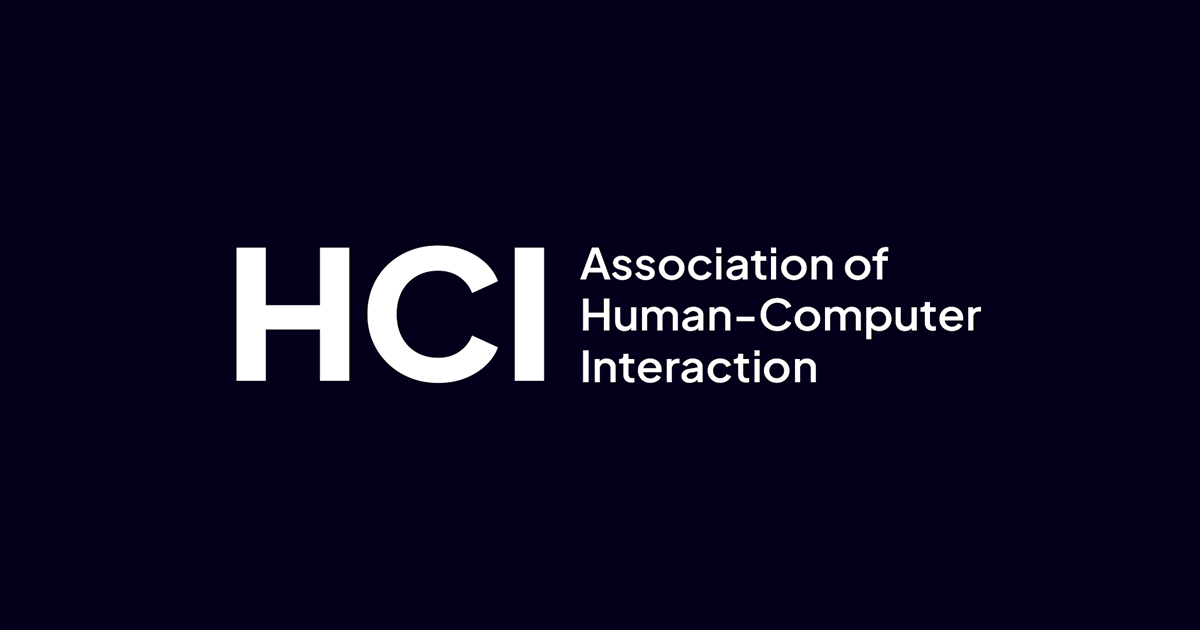Association of Human-Computer Interaction
Open Science
“We support open science, and continue to help publicise open access research in human-computer interaction”
Information
What is human-computer interaction?
The design of a human-computer interface has a direct impact on the efficiency of the interaction between the two parties. Human-computer interaction (HCI) came about in the 1980s as personal computing became more popular. Computers were no longer built solely for experts, and HCI’s goal was to make interactions with computers more efficient and easier for a wide range of users with differing skill levels.
HCI experts study the way people interact with computers and then develop novel technologies to help people use computers more efficiently. The goal of HCI is to minimize the cost of interaction (i.e. the amount of physical and mental effort a user must exert when using the technology) and to make interactions more “human”.
The discipline of human-computer interaction is a precursor to user experience design
The field of HCI aims to improve human-computer interaction by way of improving the functionality, usability, reliability, and convenience of computer interfaces. One of the core principles of HCI is iterative design. After designers understand their audience, their mission, and the empirical measures surrounding an interaction with an interface, they follow several iterative design steps, including: designing the user interface (UI); conduct user tests; analyze test results; and repeat as required. This iterative design process repeats until an interface is deemed user-friendly.
Interactions between machine and human can be facilitated in a number of ways. In general, it is possible to use one or more of the human senses to form the basis of a UI, such as the tactile (touch) UI, the visual (sight) UI and the auditory (sound) UI. HCI professionals find an optimal combination that suits the goal of the product. For example, in the case of a mobile application, this could be a mix of visual and audio user interfaces.
The growth of mobile devices such as smartphones and tablets have prompted user experience (UX) professionals to focus on making HCI more accessible to all user groups, including those with cognitive or physical disabilities. Another HCI design challenge is the need to create omni-channel experiences while accommodating emerging technologies such as virtual reality (VR) devices. A typical user may have a variety of devices which they interact with and therefore should be able to move from one device to another and maintain the user journey in a convenient and effective way. This means that HCI professionals must look at each digital product holistically and focus even more on end-user needs and desires.
The main components of human-computer interaction
Three primary components exist within of human-computer interaction: user, interface, and how both work together. The way in which users interact with an interface is the intersection of computer science, behavioral science, and other areas of study. The relationship between these three components is highly important as computers have almost infinite uses and countless opportunities exist for open dialogue between a user and a computer. Through analyzing relationships between users and interfaces, organizations can provide useful and efficient products regardless of the profile of the user.
Why is human-computer interaction important?
Human-computer interaction is a core aspect of the digital era. Every application, product or software that is developed interacts with a human. Those interactions should be effective and thoughtful. Fundamentally, human-computer interaction is necessary as it puts the user first by getting a better understanding of how they use and interact with technology.
Human-computer interaction also considers accessibility, helping to make interfaces more accessible to everyone. Every use is different. Some users may be older, have cognitive impairments or have a physical disability. HCI tries to understand each user and their interactions with the technology they use in order to improve those interactions.
Get access to more resources, literature and information on human-computer interaction by joining as a member of the Association of Human-Computer Interaction. Apply for membership →
